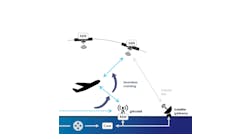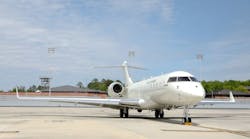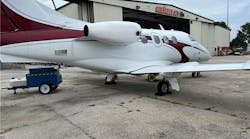The following information was released by the Federal Aviation Administration:
Michael Huerta, New Orleans, Louisiana
October 22, 2012
AAAE - National Airports Conference
Thank you, Bruce [Carter, AAAE Chairman]. It is great to be here today.
Airports form the first moment of the travel experience for the hundreds of millions of flyers who board airplanes in America each and every year. Your airports set the tone for the rest of the trip. And they reflect the spirit of the local community.
Airports are where we reunite with our loved ones and welcome home our troops. They are where business travelers start their weekly schedule. They punctuate the beginning and the end of aviations contribution to our economy. And they play a huge role in supporting the 10 million jobs and the $1.3 trillion that civil aviation contributes annually to our nation.
Now, airports big and small are a vital part of our infrastructure. When we invest in the safety, efficiency and capacity of Americas airports, what we create is an America thats built to last.
If we are to flourish, we must create a secure foundation to handle the airline passenger travel thats expected to nearly double in the next 20 years.
NextGen is the FAAs blueprint to transform our air space system. We are able to leverage new technology to bring real benefits to airports and all our users, and were able to do it today.
NextGen takes our airports, our technology and air traffic control procedures to the next level. It provides a travel experience that is predictable and at the same time efficient. While NextGen work is underway to enhance our airspace, were also committed to maintaining and enhancing our nations runways, taxiways and terminals. This is essential for the smooth functioning of our national economy.
The Airport Improvement Program, or AIP, accounts for $3.35 billion of the FAAs total budget of nearly $16 billion. And now that we have a four-year reauthorization, the AIP has much more predictability and much more stability.
We have fully obligated 100 percent of the money available for grants in fiscal year 2012 to support airport planning and infrastructure projects. That amounted to nearly $3.4 billion dollars flowing into our economy to support our nations airports. It is making possible critical investments and upgrades to improve our aviation infrastructure.
Over the last four years, the FAA has issued close to 11,000 AIP grants totaling more than $14 billion.
And during that time, airports around the country have undertaken and completed many airport development projects.
A significant number of airports across the country have received AIP money over the last four years to extend runways, taxiways and aprons. They have received grants to enhance runway safety areas, build and improve airport terminals and reduce aviations impact on the environment.
These improvements are extremely important to the enhanced safety and efficiency of our entire air space system. They are the base from which we build NextGen capabilities.
And NextGen is about enhancing safety and enhancing efficiency. We have the safest aviation system in the world. But were always looking to make it even better.
With commercial accident rates at exceedingly low levels, our focus is to identify and mitigate conditions or trends that could give rise to safety problems. One prime example is our commitment to reducing runway incursions on the airport surface.
We have recently released a new advisory circular to provide a vehicle-based runway incursion warning. We have also completed an extensive update of our advisory circular on airport design a few weeks ago. Its available at FAA.gov. It emphasizes improving taxiway geometry to prevent runway incursions. This is the first comprehensive update in about 20 years. Its available online and everyone can take advantage of it.
In addition to improved guidance on how to construct new runways, we are improving the surveillance of existing runways.
Weve completed the deployment of ASDE-X at 35 major airports. ASDE-X allows controllers to see a more precise location of aircraft on runways, taxiways and on approach corridors. It provides visual and audible alerts to assist controllers in keeping aircraft properly separated while on the ground.
In Boston, were taking ASDE-X one step further. Were fusing it with Automatic Dependent Surveillance Broadcast, or ADS-B, and radar to create an improved picture of aircraft and airport vehicles on the ground, thereby enhancing situational awareness.
Earlier this year we started a test program at Logan International by equipping nine vehicles with ADS-B squitters. These vehicles are snow plows, fire rescue, a wildlife truck airport operations trucks. The idea is to have a variety of equipped vehicles.
These squitter boxes send out a pulse that is picked up by both the ASDE-X equipment and the ADS-B transceivers at the airport.
The information about the vehicles call sign and the direction it is moving is sent to the control tower where controllers see the information on their ASDE-X screen. ASDE-X uses three surveillance technologies: surface radar, multilateration, and ADS-B. It fuses these three information streams together for a complete surface picture. This capability provides a much more accurate picture of the location of all aircraft and vehicles on the runways and taxiways. It contributes to greater situational awareness and helps prevent runway incursions.
In addition, Massport has provided tablets to drivers that allow them to see each other and the entire airfield, just as the controllers do.
Eventually, controllers, vehicle operators and also pilots will be able to see the same picture of the airport surface. This will reduce the potential for runway conflicts. NextGen is broadening our communication and sharing data more easily.
By transforming our airports and airways with NextGen technologies, we will safely and efficiently accommodate the expected traffic growth as we decrease aviations impact on the environment. These improvements mean that flights are shorter and more direct, and that aircraft burn less fuel and emit less carbon.
We are tackling the problem of congested airspace over a variety of metropolitan areas across the country.
Our Metroplex initiative deploys satellite-based navigation to help us use our airspace more efficiently. We are deconflicting traffic headed to adjacent airports and allowing general aviation better access to smaller airports in large metropolitan areas. The program also provides GPS precision approaches to smaller airfields that do not have expensive instrument landing systems on the ground.
Now, in doing a redesign, the old way of doing business was to focus on improving air traffic procedures at one airport, separate from all of the other airports in a region. But weve taken a different approach. We are working to improve air traffic flow around all of the airports in a metroplex. Were bringing all the stakeholders to the table airports, airlines, our air traffic controllers and federal agencies. Were creating new satellite-based routes designed to relieve congestion and improve safety and efficiency.
By changing the way we approach the problem of designing new navigational procedures, we are able to improve our airspace in three years. Under our old way of doing business, these changes would have taken five to 10 years to complete. Were seeing great progress in Houston, Atlanta, Charlotte, California and north Texas. And we just kicked-off our work for the Florida Metroplex last month. We are well on our way to designing and implementing NextGen Metroplex procedures in Washington, D.C.
In fact since early August, all major airlines flying into Reagan Washington National Airport have been using two new Optimized Profile Descents. During the month of August more than 2,400 flights used these fuel saving arrival paths.
So, what is an optimized profile descent? Its an environmentally friendly procedure which allows an aircraft to reduce engine power as it descends from cruising altitude. The way flights descend now requires leveling off at each stage, like walking down the stairs and this burns fuel. Using these new procedures, aircraft almost glide down, like sliding down the bannister. These descents save fuel and cut emissions.
Beyond the operational improvements, the names of these two arrival procedures are special. One is called Freedom and the other is called Troops. The names are a tribute to the bravery of the men and women who made the ultimate sacrifice on September 11, 2001 and to our troops who defend freedom around the world.
On each arrival, we have officially renamed the navigational points in the sky that each aircraft passes through on its way to Reagan National. The names of these waypoints now form this statement: We-will-never-forget-September-11th. Always-freedom.
The Troops arrival procedure honors representatives from each branch of the military with waypoints that pay tribute to the Navy Seals, the Army Rangers, the Marines and the Air Force Pararescue.
Were also working very diligently to increase the number of aircraft that can land at an airport each hour, while maintaining safety. That is why we have put so much effort into closely spaced parallel operations.
We are working on improvements to staggered approaches for runways that are very close together closer than 2,500 feet. About 17 of our busiest 35 airports have runways this close together.
You cant do simultaneous operations on these runways, but we can still safely lower the separation standard for aircraft that are coming into these close runways.
This is because our entire airspace system has undergone extensive advances over the years. We have the ability to collect and analyze better radar data. Our aircraft have better avionics, and we have more effective training for both pilots and controllers. Technology across the board has improved to such an extent that we are extremely confident that we can operate aircraft at a closer proximity to one another and still be just as safe.
Now, these reduced separation standards of three miles down to one-and-a-half nautical miles for staggered approaches have already been approved for specific runways at seven airports right now. They are: Boston, Newark, St. Louis, Cleveland, Seattle, Memphis, and Philadelphia. An additional site San Francisco was just approved effective on October 30th. Before airports can use these new separation standards, the FAA must first train the controllers.
These changes will help the entire air space system by safely increasing capacity at major hubs when the weather prohibits visual approaches. It will decrease the ripple of delays that spreads across the system when one hub is experiencing weather conditions.
We are making great strides in using new technology and procedures to bring benefits to airports and the American people.
In closing, I really would like to underscore that we cannot implement NextGen or any of these technologies in a vacuum. This is a public-private partnership, among airports, aircraft operators, the FAA and many industry stakeholders.
Aviation has always been about innovation and it has always been about collaboration. The decisions we all make over the next several years are going to affect the air transportation system in this country for decades to come.
It is critical that we work together so we can lay the foundation for the future. With the right investments and a strong partnership with all of you, we can prepare our aviation system for the challenges ahead. And that future is bright indeed.
Thank you.
###
Copyright 2012 States News Service




